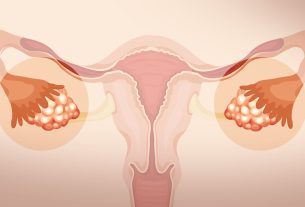Galactosemia is a metabolic disease in which a person is unable to digest foods with galactose, which can cause symptoms such as drowsiness, vomiting, difficulty eating and gaining weight, swollen belly and yellowish skin and eyes, in the first days of life.
Galactose is a sugar that is normally found in milk, some fruits or vegetables and used by the body to produce energy. However, in the case of galactosemia, there is decreased activity or fewer enzymes responsible for metabolizing this sugar, causing it to accumulate in the blood and causing symptoms.
If galactosemia is suspected, it is important that the pediatrician is consulted so that tests can be carried out to confirm the diagnosis and, thus, treatment can be started, which normally involves changes in diet to avoid the consumption of foods with galactose.

Main symptoms
The main symptoms of galactosemia are:
- Somnolence;
- Vomiting;
- Diarrhea;
- Difficulty feeding;
- Muscle flaccidity;
- Swollen belly, due to enlarged liver;
- Difficulty gaining weight;
- Yellow skin and eyes.
Symptoms generally appear in the first few days of life and, if galactose is not avoided in the diet during this period, they can even put the baby’s life at risk in some cases. Furthermore, older children, when not treated properly, are at greater risk of problems such as developmental delay, short stature, cataracts and even cirrhosis.
How to confirm the diagnosis
The diagnosis of galactosemia can be made during pregnancy, through amniocentesis, which is an exam that allows you to identify genetic changes in the baby. After birth, the diagnosis can be confirmed through an expanded heel prick test, which allows the baby to identify genetic and metabolic changes. See more about the heel prick test.
As the baby develops, it is also possible to make the diagnosis through specific blood tests to assess the presence of the enzyme and its activity, in addition to urine tests, as it is common for an increase in galactosemia to be observed in cases of galactosemia. of galactose levels in urine.
Causes of galactosemia
Galactosemia is a rare genetic disease in which there is a deficiency or absence of enzymes involved in the process of metabolizing this sugar in the body. It is important that the deficient enzyme, with reduced or absent activity, is identified, as this means that treatment can be started immediately and complications can be prevented.
How the treatment is carried out
Treatment for galactosemia must be guided by a pediatrician and consists of changes in diet, with the child avoiding foods that contain galactose.
How to avoid galactose in galactosemia
To avoid galactose, it is normally recommended to replace all foods that contain milk in their composition, including breast milk. Therefore, the use of specific formulas, such as those based on soy, are generally recommended for babies with galactosemia. See how to choose milk for your baby.
Galactose is also present in some fruits and vegetables, such as papaya, watermelon, peppers and tomatoes. Furthermore, some industrialized products may also contain traces of galactose, such as those containing hydrolyzed milk protein, casein and monosodium glutamate as ingredients.
Therefore, avoiding the consumption of these foods can also be recommended, and it is important to consult a nutritionist or nutrologist, who can better advise what the diet should be like in case of galactosemia.




